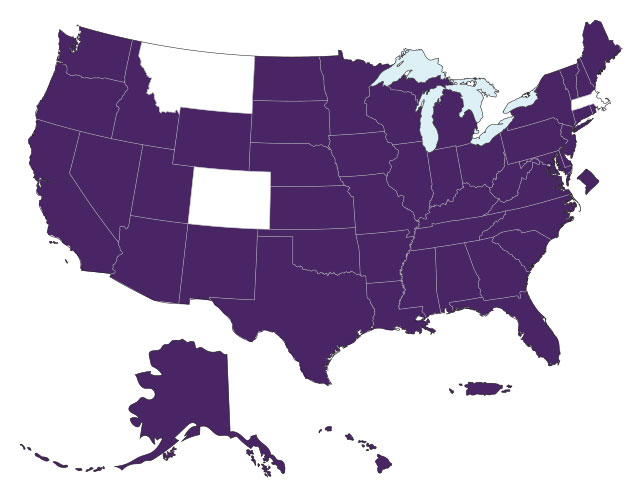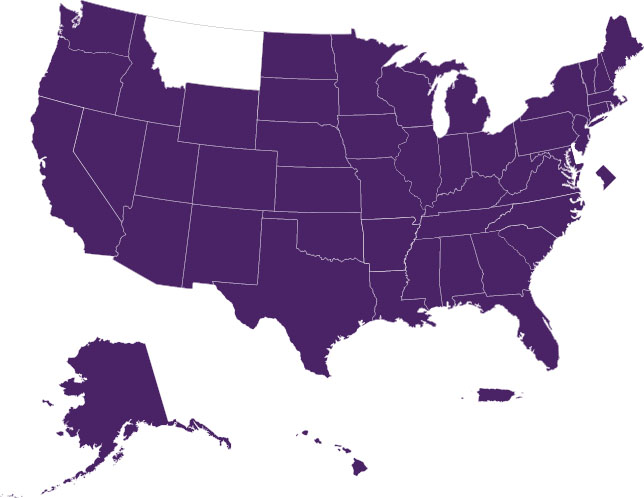Surveillance — collecting data, insight and information — is an essential function of public health. Through data collection, needs assessment, and analysis, public health officials and policymakers can better understand the extent of Alzheimer's and other forms of dementia and their impact, and drive positive changes to address the problem. This page provides information on how to collect data and use it.
For fact sheets and specific data analyses, including state-specific data, please see Data Resources. You can also learn more about surveillance (PDF).
Behavioral Risk Factor Surveillance System
In partnership with the CDC, each state annually conducts a public health survey known as the Behavioral Risk Factor Surveillance System (BRFSS). States may collect data on the impact of cognitive decline and caregiving through use of two optional BRFSS modules:
- BRFSS Cognitive Decline module measures subjective cognitive decline (SCD) and its effects on function and daily living.
- BRFSS Caregiver module provides information about people who identify as caregivers, including the burden of care and types of care provided.
BRFSS Cognitive Decline module
The BRFSS Cognitive Decline module (PDF) is the only source of state-specific data on cognitive health. The module measures subjective cognitive decline (SCD) — self-reported difficulties in thinking or memory that have been getting worse over the past year — and what impact SCD has on everyday life. SCD is often one of the earliest warning signs of dementia and understanding the current and potential future scope of thinking and memory difficulties can help public health agencies address and prepare for this burden.
How public health can use this data
Early detection: Over half of people experiencing SCD have not discussed their thinking or memory difficulties with a health care provider. The following nationwide SCD data helps underscore the importance of promoting early detection and diagnosis:
- 54.8% of adults aged 45 and older experiencing SCD have not discussed these difficulties with a health care provider.
- Among Black Americans experiencing SCD, 57.4% have not discussed these difficulties with a health care provider while 58.3% of Hispanic Americans experiencing SCD have not had these discussions.
- Men with SCD report speaking to a health care provider less than women with SCD (39.2% versus 49.9%).
Risk reduction: People with SCD are more likely to have other health conditions that are risk factors for cognitive decline and dementia. This nationwide data demonstrates the need for public health to invest in dementia risk reduction.
- 81.2% of adults aged 45 and older experiencing SCD have at least one other chronic condition.
- 36.3% of adults with SCD are obese and 35.6% are overweight.
- 40.2% of adults with SCD do not get enough physical activity.
Public health professionals can use their state-specific SCD data to build an urgent case for early detection and risk reduction in their communities by communicating with legislators, government agencies, opinion leaders, other nonprofit and community-based organizations, funders, and other interested partners.
BRFSS SCD analysis
BRFSS Resources
Category:
State:
Year:
No known public health action at this time.
For state-specific fact sheets, please see Data Resources.
Learn more about analyzing the Cognitive Decline module: Using Cognitive Decline Module Data — Statistical Brief (PDF) and the FAQ from CDC.
State Usage of the Cognitive Decline Module
Purple indicates the state included the Cognitive Decline module in 2019 and/or 2020 as part of a coordinated, nationwide effort.

BRFSS Caregiver module
The BRFSS Caregiver module (PDF) provides data about caregivers and the challenges they face while providing care to a friend, family member or neighbor. This module asks about a care recipient's health problems, including Alzheimer's and other dementias, and what kind of care the recipient needs. The Caregiver module also provides insight into the scope and burden of caregiving responsibilities.
How public health can use this data
Care planning and coordination: Caregivers for people living with dementia often provide intimate and personal care for a long period. Nationwide BRFSS Caregiver data shows that dementia caregiving is often lengthy and time-intensive:
- 31.1% of dementia caregivers provide 20 or more hours of care per week on average.
- Over half (53.7%) of dementia caregivers have been providing care for 2 years or more.
Proper care planning includes the caregiver and how they can be supported. Comprehensive care coordination can improve the care a person with dementia receives and ease some of the burden on caregivers.
Home- and community-based services: Caregivers for people living with dementia need support and services to help them provide quality, safe care for their family and friends. Nationwide BRFSS Caregiver data shows that most dementia caregivers provide intimate and complex care for which access to home- and community-based services could provide substantial help.
Caregiver burnout and stress affects both their health and the well-being of the person living with dementia. Supporting caregivers can reduce stress and improve quality of life and health outcomes.
- 25.7% of caregivers for people living with dementia also care for a child or grandchild in the home.
- 62.6% of dementia caregivers help manage personal care tasks such as bathing and dressing.
- 80.1% of dementia caregivers help manage household tasks such as cleaning and managing money.
Overall, public health professionals can use this data to inform the community, legislators, funders, government officials, and other stakeholders of caregiver needs. Many are not fully aware of the extent of unpaid care and how it affects caregivers' lives and wellbeing.
BRFSS Caregiver analysis
BRFSS Resources
Category:
State:
Year:
No known public health action at this time.
For state-specific fact sheets, please see Data Resources.
Learn more about analyzing the Caregiver module: Using Caregiver Module Data — Statistical Brief (PDF) and the FAQ from CDC.
State Usage of the Caregiver Module
Purple indicates the state included the Caregiver module in 2021 and/or 2022 as part of a coordinated nationwide effort.

Assessment
Comprehensive needs assessments drive a government's ability to effectively develop, implement and maintain strategies that improve health and well-being. Public health agencies can develop and conduct needs assessments to ensure that cognitive health, Alzheimer’s and dementia, and caregiving are included in needs assessments at the state and local level.
What public health can do
Needs assessments: To help states better understand the needs and community resources of their populations, set priorities for future action, and better address cognitive impairment within their communities, the Alzheimer's Association in partnership with the Association of State and Territorial Health Officials (ASTHO) created the
Needs Assessment Toolkit for Dementia, Cognitive Health, and Caregiving. Download the
complementary Excel file with fillable tools to use in your community.
Measure progress: Performance measures can help public health leaders identify priorities and work toward collective well-being. The
Performance Measures Matrix for Alzheimer's and Dementia is a collection of existing performance measures related to Alzheimer's, dementia, risk reduction and detection that can be used by public health agencies to develop plans and measure progress. The matrix presents the measures in a sortable spreadsheet that you can download.
Additional data
For additional data — including data on aging, Healthy People 2030, and Alzheimer’s disease — please visit our Data Resources page.